
In the Wallachian Open-Air Museum, modern new buildings will be built
Ribbon, Hill Cave, and Observation Tower
Source
Barbora Černá Dvořáková
Barbora Černá Dvořáková
Publisher
Tisková zpráva
13.02.2025 13:15
Tisková zpráva
13.02.2025 13:15
Czech Republic
Rožnov pod Radhoštěm
Karel Janča
janca architect
In the newly developing area of the Rožnov museum in nature called Kolibiska (the name derived from the word "koliba," of which there will be the most in the area), there will also be three new buildings with modern functions and appearances. In the area covering 17 hectares, showcasing mountain agriculture, shepherding, and forms of wood processing in the Carpathians in the regions of Moravia and Silesia from the late 18th to the mid-20th century, which will be a Central European unique in its scope and complexity, the new buildings will serve to provide better comfort for visitors. The chief designer of Kolibiska and the author of the new construction objects is the studio janca architect. The area is set to be completed in 2027, with total costs for its construction amounting to 230 million crowns.
“The Kolibiska area adds to life in Wallachia a part in the hills. It is located above the Wallachian village, which it logically connects to. It will consist of about 30 construction objects,” states architect Karel Janča from the janca architect studio.
Kolibiska will predominantly consist of original, no longer utilized buildings that will be moved here and that would otherwise be destroyed: colibas, stables, cottages, haylofts, and others. The second element will be scientific reconstructions of already non-existent buildings, such as the pajta (manor sheepfold). The third type of buildings will be new constructions with modern functions and appearances that create a contrast to the historical objects.
“These new buildings will not be part of the exhibits; they are different in their function and cannot be transformed or realized based on scientific reconstruction; therefore, they will not imitate or copy historic buildings, but will have a contemporary form. We will create a modern expression using shapes and materials such as concrete, glass, and patinating steel,” explains Karel Janča.
The Viewpoint, the entrance object to Kolibiska, will offer a view of the entire area and the surrounding countryside.
“It will stand next to Jurkovič's lookout tower and as a horizontal building will represent a contrast: the contrast of the masculine (lookout tower) and the feminine principle (Viewpoint). The Viewpoint also has a feminine bent knee that evokes a ramp with a viewing platform,” describes the author of the new buildings.
The Crypt in the Hill, a multimedia hall with optical, sound, and light experiences, utilizes and revitalizes the space of the original water reservoir instead of demolishing it.
“Through revitalization and minor construction of the existing fusion of technical infrastructure, the already unused water reservoir will get a chance for a new life. The multimedia hall is a dark hall enveloped in a mound of earth, which is why we named it The Crypt in the Hill. We are trying to downplay its presence in relation to the other objects; it will be a somewhat mysterious building behind a wooden fence,” says Janča.
The Ribbon, the new access road to Kolibiska, will be a clear orientation element instead.
“The concrete line – the ribbon – will wind through the area and guide visitors through places where it is currently difficult to navigate. It deliberately sets itself apart, being designed as a slender bridge on central pillars. It leads through areas where traditional solutions in the form of a sidewalk with embankments and cuts would be massive, difficult to implement, and hostile to the existing mature trees,” adds the architect.
The construction of Kolibiska will cost 230 million crowns. So far, 67 million has been spent, and in the near future, another phase of construction will be realized for 80 million crowns. All necessary permits for the buildings have already been issued, and the goal is to complete Kolibiska by 2027.
“We are creating a truly unique area that will connect the past with the present. We will provide visitors with an experience of what the mountains looked like during the times of shepherds, lumberjacks, charcoal burners, or those who farmed from remote cottages. I believe they will also appreciate the entirely new modern visitor infrastructure,” concluded Jindřich Ondruš, the general director of the National Museum in Nature.
“The Kolibiska area adds to life in Wallachia a part in the hills. It is located above the Wallachian village, which it logically connects to. It will consist of about 30 construction objects,” states architect Karel Janča from the janca architect studio.
Kolibiska will predominantly consist of original, no longer utilized buildings that will be moved here and that would otherwise be destroyed: colibas, stables, cottages, haylofts, and others. The second element will be scientific reconstructions of already non-existent buildings, such as the pajta (manor sheepfold). The third type of buildings will be new constructions with modern functions and appearances that create a contrast to the historical objects.
“These new buildings will not be part of the exhibits; they are different in their function and cannot be transformed or realized based on scientific reconstruction; therefore, they will not imitate or copy historic buildings, but will have a contemporary form. We will create a modern expression using shapes and materials such as concrete, glass, and patinating steel,” explains Karel Janča.
The Viewpoint, the entrance object to Kolibiska, will offer a view of the entire area and the surrounding countryside.
“It will stand next to Jurkovič's lookout tower and as a horizontal building will represent a contrast: the contrast of the masculine (lookout tower) and the feminine principle (Viewpoint). The Viewpoint also has a feminine bent knee that evokes a ramp with a viewing platform,” describes the author of the new buildings.
The Crypt in the Hill, a multimedia hall with optical, sound, and light experiences, utilizes and revitalizes the space of the original water reservoir instead of demolishing it.
“Through revitalization and minor construction of the existing fusion of technical infrastructure, the already unused water reservoir will get a chance for a new life. The multimedia hall is a dark hall enveloped in a mound of earth, which is why we named it The Crypt in the Hill. We are trying to downplay its presence in relation to the other objects; it will be a somewhat mysterious building behind a wooden fence,” says Janča.
The Ribbon, the new access road to Kolibiska, will be a clear orientation element instead.
“The concrete line – the ribbon – will wind through the area and guide visitors through places where it is currently difficult to navigate. It deliberately sets itself apart, being designed as a slender bridge on central pillars. It leads through areas where traditional solutions in the form of a sidewalk with embankments and cuts would be massive, difficult to implement, and hostile to the existing mature trees,” adds the architect.
The construction of Kolibiska will cost 230 million crowns. So far, 67 million has been spent, and in the near future, another phase of construction will be realized for 80 million crowns. All necessary permits for the buildings have already been issued, and the goal is to complete Kolibiska by 2027.
“We are creating a truly unique area that will connect the past with the present. We will provide visitors with an experience of what the mountains looked like during the times of shepherds, lumberjacks, charcoal burners, or those who farmed from remote cottages. I believe they will also appreciate the entirely new modern visitor infrastructure,” concluded Jindřich Ondruš, the general director of the National Museum in Nature.
The English translation is powered by AI tool. Switch to Czech to view the original text source.
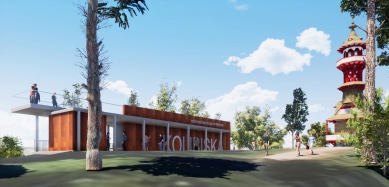
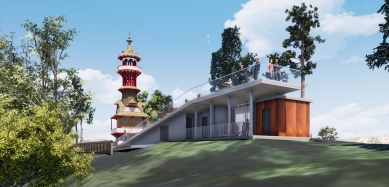
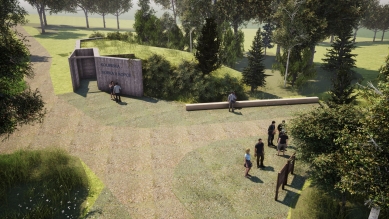
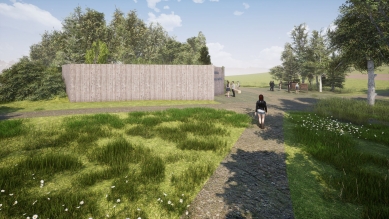
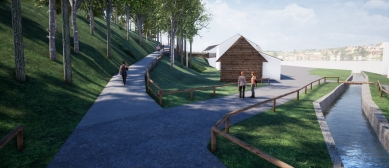
0 comments
add comment












